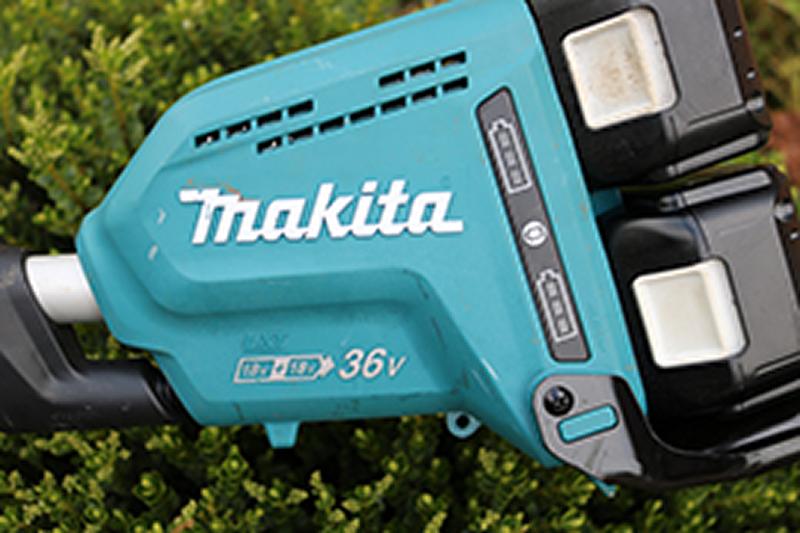
BALI tests Honda UK's and Makita's latest landscaping machinery
25 Jun 2018 | BALI Member News
BALI’s Technical Officer (Policy & Research), Owen Baker, had the opportunity to put several pieces of garden and lawn care products to the test this month, namely, BALI Registered Affiliate member Honda UK’s ‘Miimo’ automatic lawnmower and BALI Registered Affiliate member Makita UK's battery powered landscape equipment.
As a bit of a car geek, I remember the reaction from the average armchair expert when the idea of electric cars was first presented to the public:
“They won’t be fast enough”
“They’ll take ages to charge”?
“The range will be rubbish”?
“I don’t want to drive a milk float”
Then Tesla came along and, nearly overnight, electric cars became desirable. Barely a day goes by when I don’t see at least one type of electric car during my commute to Stoneleigh, and not once have I seen one broken down, stranded due to lack of charge or holding up traffic.
Battery technology has leapt forward so quickly in recent years, that its use has spread to applications most of us would never have imagined even 5 years ago. Step forward Makita, with a battery powered…coffee machine. This ingenious device has a brew time of just 7 minutes and is powered by a single 18v battery.
BALI wouldn’t let me review just the coffee maker, so I’m pleased to announce Makita also sell a range of cordless, battery powered landscape equipment, aimed squarely at the professional user. Over the past month, I have been using the line trimmer, blower and hedge trimmer. In place of an engine are two 18v batteries, which power a 36v electric motor.
Firstly – a prediction. You will be genuinely amazed by how good Makita’s battery powered landscape equipment is. Whilst I am sure most of you will have used items of electric cordless equipment such as drills, circular saws and nail guns in the past, I guarantee you will be convinced by battery technology in professional landscape equipment.
They are incredibly light. After using equipment powered by an engine for decades, it feels alien to be holding professional kit that weighs so little. Another difference is the weight distribution of the kit. On the strimmer I borrowed from Makita, the weight of the batteries was at one end, and the motor was at the other. 50/50 weight balance in the centre of the strimmer. Perfect.
There is more than enough power. Before using the kit, I feared it may be more suited to the keen amateur gardener than professional user. I was wrong. All three items of kit felt very well engineered, well-made and performed as well as you would expect from a professional piece of equipment. At no point was I left wanting more power from any of the equipment. I’ll say that again – none of the kit I tried felt underpowered.
Electric motors are perfectly suited to professional landscape equipment. Because of the different way motors work to engines, even at low speeds, an electric motor is very powerful. Electronic equipment doesn’t rely on high speeds to carry out tasks. All of the Makita equipment features either buttons or roller switches to adjust speed, which means for example, a reciprocating blade on a hedge trimmer can be set to a slow speed, whilst maintaining the ‘power’ to cut a hedge.
They are incredibly quiet. Whilst operatives will still need to wear ear protection (for example, the Makita strimmer has a sound power level of 89dB(A)), the noise produced by an electric motor is far less than that on any engine. As a result, there is the potential for the equipment to be used in sensitive areas or at sensitive times of the day/night.
Operation and maintenance is minimal. In the case of the Makita kit I tried, it really is a case of attaching a battery to whichever unit you chose (the batteries are sealed, lithium-ion units and work on all Makita landscape equipment), pressing a button to turn the unit on and squeezing a trigger. Aside from charging the battery (which takes approximately 55 minutes using a standard, domestic 240v mains socket), there is no other procedure. When the battery is flat, you simply remove it from the equipment and charge it. The intelligent chargers ensure batteries are charged and discharged correctly, and cannot be damaged through over-use or over-heating (a common cause of failure). The motors require no maintenance. The only warning I would raise is using the equipment in wet weather – the instructions for all three pieces of equipment stated they should not be exposed to water or rain.
Battery life is likely to be a major consideration and, depending on your job list, will dictate whether battery-powered equipment is viable for your enterprise. The equipment loaned to BALI included Makita’s most powerful batteries – 6.0Ah . Using the strimmer continuously at the highest speed setting on long grass, I managed to discharge a battery in 25 minutes. Conversely, I used the strimmer, blower and hedge trimmer gently for over 45 minutes on another occasion.
Spare batteries can be purchased and charged in less than 1 hour, meaning any shortfall in runtime is offset by versatility and speed of charging. The only issue I can foresee is on big jobs where electricity may not be available to charge equipment. However, 12v in-car chargers are available, offering a charge time of roughly 1330 minutes for the 6Ah battery. An inverter may also be fitted to vehicles where site-based charging is required, meaning the standard 240v charger can be used.
